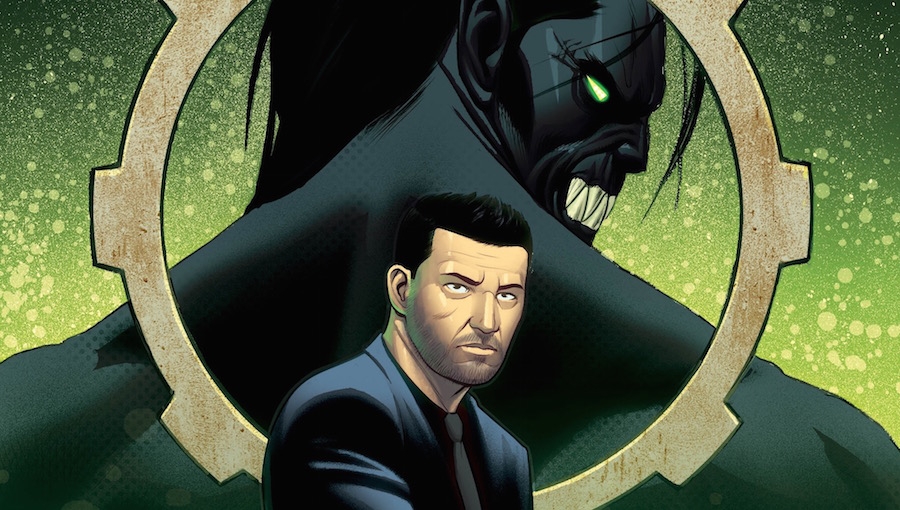Replicator is the brainchild of Australian writer Robert Arnold. Arnold’s creative team includes Bosnian artist Armin Ozdic (named Best Young Balkans Comic Book Artist), colorist Ross A. Campbell who has worked with mainstream publishers such as Image, Top Cow, Aspen, Zenescope, Dynamite, and Action Lab, and letterer Jamie Me (The Forgotten Man, Cavemen vs. Zombies). The first issue has been edited by Nick Glenister and Alison Arnold.
The 55-page issue sets Replicator ten years hence in the UK where a virus, known as Red Death, has been released. The island’s borders have been closed; the government has issued Martial Law, but both the media and military are ineffective with coping with the growing hunger and rioting that ensue. Those not infected and have something to offer are allowed to enter a walled sanctuary. Chapter One – “Fading Light” – introduces readers to the main character, Ryker, a Sanctuary investigator turned rogue after the kidnapping of his wife Sarah, who developed a cure for Red Death. The two factions, Sanctuary with its private military mechanized force called “contracts” and the military, situated outside of Sanctuary, at a site called Odessa, are also introduced; both are not without blemish and have their own internal struggles. In other words, Sanctuary is not a bed of roses.
As the premiere issue, Arnold conveys well the major overarching story beats of Replicator, yet leaves many gaps between to entice the reader to return for the next issue. For example, he opens with Ryker storming Sanctuary looking for Sarah and concludes with him losing her when he was a Sanctuary man. Revealing a seedier side of Sanctuary is reminiscent of Michael Anderson’s 1976 film Logan’s Run and while a familiar trope, Arnold uses it efficiently, without feeling repetitive. This story could have easily become text heavy, but Arnold and his editing team of Glenister and Alison Arnold keep the text lean and concise.
The partnership of Ozdic and Campbell results in a polished and cohesive visual experience for the reader. In particular, the first two establishing panels in the prologue convey the loss and despair wrecked by the virus. While there are some proportion issues, Ozdic does not shy away from focusing and emphasizing facial expressions since in this first issue, Replicator is setting up a human story that readers will want to follow. Ozdic also tried some unique POV perspectives that worked in keeping the story fresh and the action moving. Campbell’s colors bring the characters to life, and his shading complements the minimal texturing, which doesn’t compete for attention or draw the eyes away from the characters and action unfolding across the panels.
Letterer Me’s choice of fonts for the lettering results in easy-to-read dialogue and narratives. The narrative boxes work exceeding well; however, the slight shading around the text in the speech bubbles could be more crisp and clean. Also, there were a couple of instances in which the speech bubbles were not positioned well, which led to reading the wrong bubble first. Repositioning the first bubble up a little more in the panel would have resolved this minor inconsistency.
Replicator will be of interest for readers who enjoy reading about near-future societies rife with unrest, biological threats, and a hero’s journey. The locale of UK as a self-contained environment for a viral threat is always fascinating (Think Danny Boyle’s 28 Days Later from 2003.) and invite a microcosm study on humanity, as well as provide commentary on human nature. The follow-up issue will surely expand on these theme and fill-in story beats presented in this first issue. The issue is currently crowdfunding for the first and second issues on Kickstarter.

